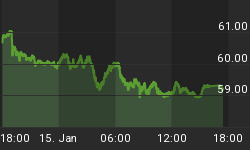Economists have jacked up the projection for U.S. light crude to average $60.23 per barrel in 2019 from a $58.92 forecast in March in the second and most bullish upwards revision since the beginning of the year.
The verdict was rendered by 31 economists in Reuters latest monthly survey, and it forecasts that oil prices are likely to stay elevated for the rest of the year as OPEC output curbs and an end to waivers on Iranian oil are expected to keep supply tight.
For Brent crude, the experts have forecast and average $68.57 a barrel in 2019, an improvement on the March poll forecast of $67.12.
The majority of polled analysts expect OPEC cuts to be extended till the end of the year, even though they expect the group to increase production to compensate for lower output in Iran and Venezuela.
Meanwhile, Frank Schallenberger, head of commodity research at LBBW, told Reuters that the decision by the US to remove waivers for Iranian oil is likely to remove another 0.5-1 million barrels per day from the market, thus making supply even tighter.
Oil has rallied about 40 percent this year buoyed by a deal by OPEC and other leading producers to curb output.

Source: Nasdaq
OPEC vs. Shale
There’s a possibility that prices could ratchet even higher if OPEC fails to fully anticipate falling output elsewhere.
Harry Tchilinguirian, strategist at BNP Paribas, says there’s a real risk of supply overtightening if OPEC and NOPEC allies led by Russia fail to make allowances for unplanned outages in Iran and Venezuela, but instead decide to roll over the existing cuts when they meet again in Vienna in June.
On the flipside, countries like the U.S. will be looking to capitalize on the shortfall.
The United States has been pressuring OPEC to increase output to compensate for reduced supply by the likes of Iran and Venezuela, and is likely to increase its own production. Capital Economics analyst, Caroline Bain, says the elimination of logistical bottlenecks and prevailing high prices are likely to encourage more U.S. drilling.
Indeed, according to the U.S. Energy Information Administration (EIA), U.S. crude output from the seven major shale formations is likely to climb to 8.46 million bpd in May. Consequently, this is likely to depress prices some, with Brent dropping from $70 per barrel during the second and third quarters of the current year to around ~$69 by year-end.
Output from U.S. shale has doubled over the past five years, and further increases could flood the market. Currently, there’s a tug-of-war between U.S. and OPEC with the former looking to fast-track the approval of the “The No Oil Producing and Exporting Cartels Act 2019” (Nopec) bill that will allow the U.S. to prosecute OPEC for fixing oil prices.
Excessively bullish
Yet, the bullish oil thesis could still be upset by hedge funds throwing a spanner in the works.
Over the last 10 weeks, hedge funds have been furiously amassing oil futures contracts counting on OPEC exceeding its planned production cuts, Venezuela’s production drying up, Libya’s supply continuing to deteriorate, and global oil demand growth continuing unabated. While these factors remain valid for now, net long positions in WTI and Brent are looking too bullish, thus increasing the risk of a crash if oil prices start dropping or some fund managers begin to take profits.
Data by Reuters market analyst John Kemp shows that as of April 23, long positions in WTI Crude and Brent Crude held by hedge fund and other money managers outnumbered shorts in a ratio of 11:1. The last time bullish positioning was that stretched was back in October 2018 around the time prices began a descent before eventually crashing 40 percent by the end of the year.
By Alex Kimani for Oilprice.com
More Top Reads From Safehaven.com

















